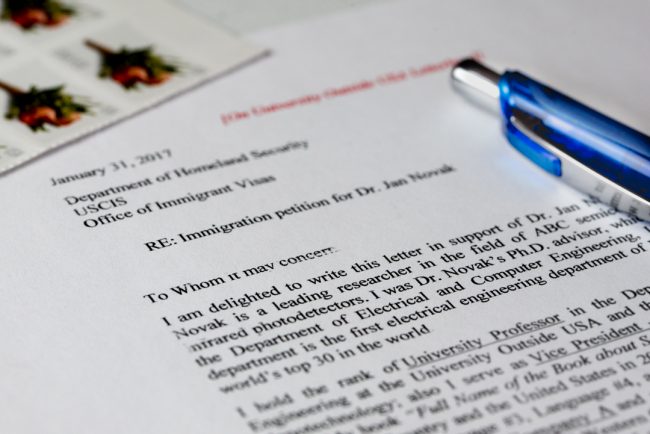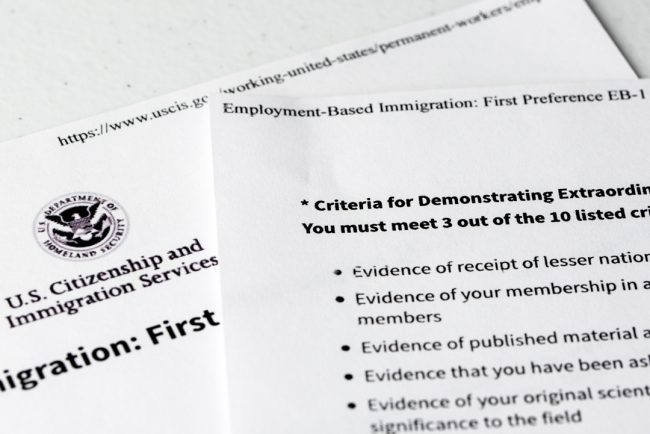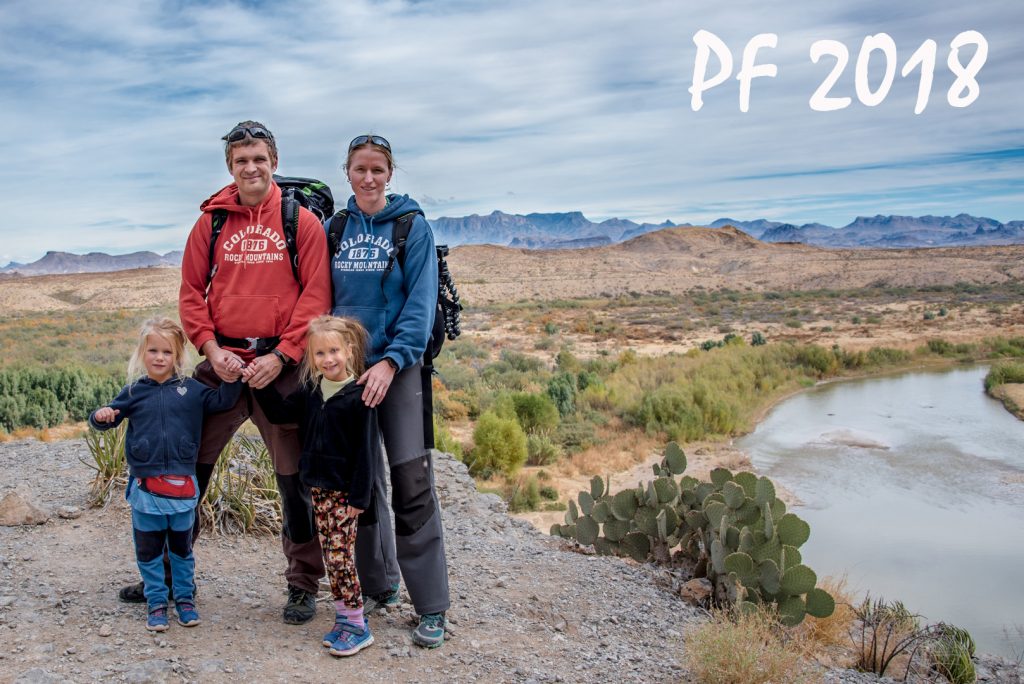A reference letter, sometimes called also recommendation letter, testimonial letter or letter of support, is one of the key parts of every EB1A petition. These letters help to convince USCIS officer that you satisfy one or more of the EB1A requirements. This blog post shows how to write the recommendation letter to support your EB1A Extraordinary Ability petition.
EB1A petition usually includes more than one reference letter. At first, the petitioner should carefully choose distinguished experts who will write his/her EB1A recommendation letters. When preferred experts agree to write a reference letter, the petitioner can start preparing a draft.

Why bother with a draft and not to let the recommender write the whole letter? EB1A reference letter is different from typical recommendation letter used, for example, when applying for a job. It is necessary to highlight specific EB1A requirements and provide an explanation why the petitioner meets these criteria.
The recommender has no idea what are the specific EB1A requirements you need to address. The recommender should also use a different language than the one he/she uses with the peers familiar with the specific terminology.
Let’s review the process of preparing EB1A recommendation letter in more details now.
Note: to make the following text easier to read, I would assume that the petitioner is a man and the recommender is a woman. Of course, there could be men and women at both positions. The only reason is that I don’t want to write everywhere “he/she”.
Who Should Write EB1A Reference Letter
When choosing the recommenders, make sure you find experts who reached significant achievements and had a big impact on the field.
USCIS doesn’t give each letter the same weight. Generally, a letter has a greater effect when written by more authoritative and independent recommender. For example, a letter from a government agency might carry more weight than a letter from your direct supervisor.
Petitioners often include reference letters from both of these groups:
- inner network – people who are directly tied to the petitioner and know him very well
- outer network – people who are independent and know petitioner due to his outstanding work achievements etc.
In case of the outer network, the reference letter should point out that the recommender doesn’t have any research collaboration with the petitioner but knows him because of the extraordinary work achievements. Again, it helps to show that expert’s opinion is not biased and helps to give the reference letter more weight.
Here are some examples of potential recommenders, ordered from the most independent and authoritative:
- government agency or authority – don’t forget that even these reference letters must be specifically about you and your extraordinary work
- academic institution or company which is established as a leader in the field
- recognized professional organization or association
- leading experts with a distinguished background
- recognized researchers, professors or industry leaders who followed petitioner’s work, cited his papers, invited him to present a conference talk etc.
- independent major reviewers of petitioner’s work
- professors, employers, supervisors, mentors or other closely related experts
Petitioners, applying from foreign countries, sometimes ask if their EB1A reference letters might be written by experts outside the USA. Although there is no rule prescribing which country should the recommender come from, it is good to have at least some of the letters from U.S. experts.
How Many EB1A Recommendation Letters
USCIS doesn’t require any specific number of reference letters for EB1A green card. Average EB1A petition typically includes 5 to 10 reference letters. But the quality should be preferred over quantity.
As mentioned above, some recommendation letters might have more significant effect. If these letters contain strong arguments and explain how the petitioner meets specific EB1A requirements, then lower number of reference letters might be sufficient.
Style And Language of EB1A Reference Letter
The goal is to convince USCIS officer that the petitioner possesses an extraordinary ability. The recommendation letter should not include only general statements but rather detailed explanation with concrete examples. For example, why the petitioner’s contributions had a significant impact on the field or how other researchers follow his research etc.
The petitioner might include additional evidence to the petition to support the statements in the reference letters.
USCIS officer evaluating your case is an expert in adjudicating EB1A petitions but not in your particular field. The language used should be understandable by an average person who is not working in the petitioner’s field.
Whenever possible, recommender might use the exact formulations stated in official USCIS EB1A requirements. For example:
The petitioner’s original scientific contribution XYZ is of major significance in the field because…
When the petitioner drafts all the recommendation letters he should avoid using the same style of language and typography. USCIS officer might get a suspicion that the letters weren’t written by recommenders. The petitioner might prepare just the main arguments and exact formulations given in EB1A requirements and then let the recommender provide the complete explanation using her own words, language style, and typography.
When I prepared drafts of the recommendation letters for our EB2 NIW green card, I created each draft with the different typography (font, letter size, line spacing, letter spacing, paragraphs etc.) before I sent it to the recommender. I also used different versions of the subject, salutation, closing statement etc. Please see the recommendation letter sample below.
If you hire a lawyer to prepare your EB1A petition, make sure he pays special attention to the drafting of the reference letters. He should closely cooperate with you and your recommender to create a strong persuasive testimony to support your EB1A case. This part is very important!
Length of EB1A recommendation letter usually varies between 1 to 4 pages. Shorter high-quality letter with strong arguments is better than lengthy vague statements.
If you plan to file EB2 NIW petition aside from EB1A, you might need to prepare two versions of the reference letter due to the different NIW requirements.
EB1A Recommendation Letter Sample
Let’s see the structure of typical EB1A reference letter.
1. Reference Letter Heading
The reference letter is usually printed on the official letterhead of the recommender’s institution which might include also her contact information, like address, phone number etc.
The letter should include the date when it was written.
2. USCIS Office or Address
Next part of the letter might include the USCIS address or a simple statement like this:
Department of Homeland Security
USCIS
But I have seen the reference letters which completely omit this part.
3. Subject
The recommendation letter might start with a subject, for example:
Re: Immigration Petition On Behalf Of [petitioner’s name with his degree]
or
Re: Extraordinary Ability Petition For [petitioner’s name with his degree]
4. Salutation
I used a different salutation in each recommendation letter. Here are some suggestions:
To whom it may concern
Dear Madam or Sir
Dear Immigration Officer
Dear USCIS Officer
Dear USCIS Examiner
Dear USCIS Adjudicator
5. Introduction
Recommender might start with a simple explanation why she is writing this letter. For example:
I write this letter as an expert advisory opinion regarding the immigration petition of [petitioner’s name with his degree].
The rest of the paragraph might include also a summarized overview about the petitioner:
[Petitioner] has made many significant and pioneering contributions to the field…
6. Recommender’s Credentials
The recommender should introduce herself and show the level of her expertise. She must convince USCIS officer that she is sufficiently qualified to provide expert opinion about the petitioner’s extraordinary ability. The recommender in the leading role in the field is a great example. The recommender’s overview might include the following:
- job title
- employer
- work experience
- research achievements
- honors and awards
- educational background
- significant publications, citations, patents or anything that shows a significant impact on the field
Recommender’s credentials might be also demonstrated by additional documents, for example, by adding her CV right behind the letter.
Here is a brief example of the recommender’s introduction:
I am a professor and Associate Chair at [Department] of [University]. I am an expert in the field of … I have authored more than 200 papers across a range of topics. I am an inventor on more than 50 U.S. patents. I am currently an editor of [major journal]. I was awarded … I presented as an invited speaker at elite conferences such as …
7. Relationship Of the Recommender And the Petitioner
The recommender should explain how she became aware of the petitioner and describe their relationship. If the recommender never worked or didn’t meet the petitioner personally, it is very important to highlight it. For example:
I had never worked with [petitioner] and only knew of him because of his outstanding research contributions to the field.
This gives the recommender’s opinion a greater weight and her letter is more objective. It might also convince USICS officer that the petitioner has a significant impact on the whole field.
The recommender might mention how she came across the petitioner’s work by specific examples like publications, peer-reviews, conference, collaborations etc.
I was delighted to meet [petitioner] in person after inviting him to give a talk at [conference] about [his research] in [date].
The recommender might further explain which part of the petitioner’s research she is familiar with.
I first noticed [petitioner] for his pioneering studies on solution ABC. [further explanation might follow].
8. Demonstrating EB1A Requirements
Then comes the most important part of the reference letter. The recommender should focus on specific EB1A requirements which the petitioner needs to demonstrate to USCIS officer. For example, reference letters are often used to convince that the petitioner has made original scientific contributions of major significance in the field.
The first important contribution [petitioner] gave to the field of XYZ was the study of the fundamental properties of XYZ crystals. In this study [petitioner] synthesized for the first time [detailed explanation follows, describing in layman’s language why it is so important].
[Petitioner’s] study opened the road for low-cost, efficient detection using XYZ and demonstrated how these materials could replace state-of-the-art ABC detectors.
[Petitioner] has provided the scientific community with important discoveries and breakthroughs. He developed an original ABC technology, improving the performance of previous technology by 12%. [more detailed description follows]

The recommendation letter might be used to demonstrate another EB1A requirement, for example, to show petitioner’s authorship of scholarly articles in the field, in professional or major trade publications.
[Petitioner’s] research was published in the world-renowned journal Science in 2015, and has been cited already more than 500 times.
Signifying the importance of [petitioner’s] work, the results were published in the journal Nature, the most important journal in the field of physics and applied science with an impact factor over 38. This journal is very selective in the research they publish. The article must be evaluated by a committee of leading scientific experts in the field. A first author publication in this journal represents a major achievement in the career of a scientist.
Another example is showing the petitioner as a judge of the work of others in the field.
Because of the groundbreaking nature of the research contributions he has made, [petitioner] has become well known as an outstanding researcher. As a result, he is frequently called upon to review the work of other researchers in his field, acting as an expert peer-reviewer for many leading scientific journals. These journals include…
These were simple shortened examples focused only on a few of the EB1A criteria. But the recommendation letter might serve to demonstrate any other EB1A requirement.
The recommender should provide detailed explanation whenever it helps to understand why the petitioner meets certain EB1A criterion.
9. Closing Recommendation Statement
At the end of each letter, the recommender might briefly summarize why the petitioner has an extraordinary ability.
[Petitioner] is a pioneer in cutting-edge research ABC. the practical impact of his research is enormous and lead to the development of important applications such as XYZ and UVW. These research areas benefit crucial sectors such as national defense, energy production, industry and the economy in general.
And then she might write her final recommendation:
[Petitioner’s] work will be, therefore, of high value to the United States of America. I am delighted to provide my recommendation for [petitioner’s] immigration petition.
10. End of EB1A Reference Letter
The recommendation letter might end by one of the following suggestions:
Sincerely yours,
Yours truly,
Respectfully,
Best regards,
Followed by recommender’s signature, name, job title, institution and contact information.
Conclusion
Recommendation letters used in EB1A petition serve as a crucial evidence demonstrating the petitioner’s extraordinary ability.
I hope that this blog post gave you an idea how to write EB1A reference letter. I published only a tiny parts here but I am already working on EB1A DIY kit where I plan to present 6 complete recommendation letters. These short examples are actually taken from the DIY kit which is based on real case.
More about the DIY kit in the following blog post.
If you have any questions or topics you are interested in, please share it with me in the comments below.
Thanks for reading and all the best in 2018!

Hey,
so when could we expect the kit to be available?
J.
Hi J,
thanks for your interest!
It is going to be very soon, planned in the first quarter of 2018. And I plan something very special for early customers, only for a short period of time.
Thanks and wish you all the best in 2018!
Veronika
Founder of EB1A Green Card
Hai Veronika
This is Hari Kumar Kalvacharla from India. I am looking for EB1 A extrordinary ability immigration for my wife. she is a classical dance exponent of ancient Indian art form ( Kuchipudi ) her eligibility criteria is more than required out of the 10 points by USCIS. As the subject is art form can you give any inputs for the recomandation letters please.
Thank You
Hi Hari,
I don’t have letters from art field, but multiple clients from art successfully applied for EB1A using our DIY kit. You need to focus on demonstrating how your wife satisfied particular requirements, providing testimonies (through these letters) and other hard evidence.
Veronika
Can share the 2017 kit instead for the time being?
Hi Ayush,
the DIY kit will include the case from 2017 and I will let you know about the release. I will do my best to publish it soon. I hope you understand.
Veronika, Founder of EB1A Green Card
Hi Veronika,
Do you have any sample of art applicants?
Thanks one more time for the content in your blog!!
Hi Cristina,
thank you so much for leaving us a comment. Currently I have only one case (scientist), but maybe in the future I might get access to more cases. I will definitely mention it on the blog. Thanks again for reading and commenting. Have a great weekend!
Veronika
Hello Veronika,
Do you have any letters and info related to Information Technology?
Thank you,
AK
Hi AK,
I don’t have letters from IT field.
It does not matter that much which field you are in – your letters should be unique, describing YOU and YOUR work.
Veronika